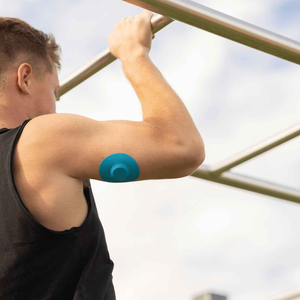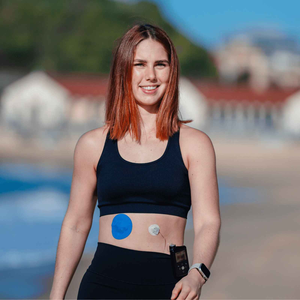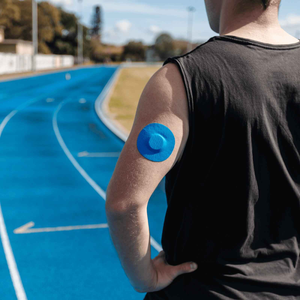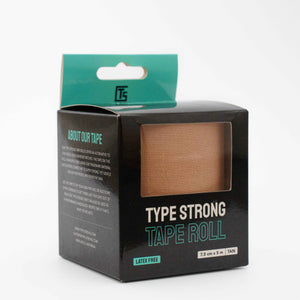You’ve done everything right – balanced meals, exercise, even a continuous glucose monitor (CGM) to stay on track. Yet, your readings still rise after certain foods. The culprit? Hidden sugars. These sneak into “healthy” yoghurts, cereals, sauces, and snack bars more often than you think.
For people managing Type 1 or Type 2 diabetes, understanding hidden sugar foods is key to staying within range and keeping CGM data accurate. Once you know how to spot them, you can prevent unexpected spikes and enjoy meals confidently.
Why hidden sugars matter for diabetes
Your body treats most added sugars the same way – whether they come from honey, fruit juice concentrate, or “organic cane syrup”. Hidden sugars can raise your blood glucose quickly, forcing you to correct or rebalance throughout the day.
According to Diabetes UK (2024), added or “free” sugars include those introduced during processing or found naturally in honey, syrups, and juices. The National Health Service (NHS, 2024) recommends adults limit these to 30 g per day – roughly seven teaspoons – yet many packaged foods exceed this in one serve.
Hidden sugars also create what’s known as glycaemic confusion: you believe you’ve made a healthy choice, but your CGM reveals a spike that doesn’t match your expectations.
Where hidden sugars often hide
|
Food category |
Why sugar is added |
What to check on the label |
|
Yoghurt & dairy alternatives |
Improves taste and texture |
Look for syrup, cane sugar, or “fruit purée” |
|
Cereal, granola, snack bars |
“Natural energy” marketing |
Compare “total sugars per 100 g” across brands |
|
Sauces & dressings |
Preserves flavour |
Check “carbohydrate of which sugars” |
|
Bread & wraps |
Added softness and browning |
Scan for sugar, molasses, or syrup near top of list |
|
Plant milks |
Sweetened to taste like dairy |
Choose “unsweetened” versions |
|
Fruit juices & smoothies |
Natural sugars released during blending |
Limit to 150 ml serves and count toward daily sugar goal |
Hidden sugars don’t only affect your diet – they can interfere with CGM data if you’re trying to stabilise patterns. That’s why label awareness goes hand-in-hand with good sensor care.
How to read food labels like a pro

1. Start with “per 100 g”
This lets you compare products fairly. The NHS (2024) classifies more than 22.5 g sugar per 100 g as high, while ≤ 5 g per 100 g is low.
2. Check “of which sugars”
This figure combines natural and added sugars but gives you a solid benchmark for total sugar content.
3. Read the ingredients list carefully
If sugar or syrup appears within the first three ingredients, it’s a sign of heavy sweetening. Watch for aliases such as sucrose, glucose, dextrose, fructose, maltose, corn syrup, rice syrup, agave, molasses, honey, or concentrated fruit juice.
4. Don’t trust “no added sugar” without context
Products with fruit juice concentrate or milk still contain natural sugars that influence glucose.
5. Understand front-of-pack colours
In the UK, green = low sugar, amber = medium, red = high (NHS, 2024). Quick visual cues like these save time during grocery runs.
The CGM connection: why it matters
Your CGM gives you powerful feedback on how your body responds to food. If a “healthy” snack bar causes an unexpected glucose rise, hidden sugars are likely to blame. Over time, these spikes can affect your average glucose and time-in-range results.
To make sure your readings stay accurate, secure your sensor with a strong, breathable CGM patch. A reliable patch prevents moisture or edge lift, which can cause false highs or lost data.
You can also improve comfort and adhesion with Type Strong Skin Adhesive Wipes before applying your sensor. A stable patch ensures trustworthy readings – especially when testing how different foods affect your levels.
Tips to stay in control when shopping
- Compare brands – Check sugar per 100 g rather than per portion.
-
Choose simple ingredients – The fewer additives and syrups, the better.

- Cook at home when possible – You control what goes in.
- Pair carbohydrates with protein or fibre – This slows glucose absorption.
- Watch “low-fat” or “energy” labels – These often hide added sugars.
- Use your CGM data as feedback – Review your curves after new foods.
If certain snacks regularly cause spikes, log them. Over time, you’ll build a personal list of safe foods. For more support on maintaining strong readings, see our blogs on proper skin prep and how long a CGM patch should last.
People also ask
How can I spot hidden sugars on labels?
Look at “carbohydrates – of which sugars” per 100 g and scan the ingredients for terms ending in “-ose” or “syrup”.
Why do “healthy” snack bars still cause glucose spikes?
Many contain natural sweeteners or fruit concentrates that still raise blood sugar quickly (Diabetes UK, 2024).
Is “no added sugar” safe for diabetes?
Not always. It means no sugar was added during processing, but natural sugars remain. They still affect glucose levels (NHS, 2024).
What are the best low-sugar foods for diabetes?
Whole foods like vegetables, plain yoghurt, nuts, eggs, and lean proteins are safest. Always check packaged labels.
How does sugar affect my CGM readings?
Hidden sugars can trigger unpredictable spikes. Balanced meals with lower sugar support smoother CGM graphs.
Patch tip
When experimenting with food and glucose levels, keep your CGM secure with Type Strong CGM patches. They’re hypoallergenic, waterproof, and designed to last through movement – ideal when testing how different foods influence your readings.
Closing thoughts – clarity equals control
Understanding hidden sugar foods isn’t about restriction – it’s about awareness. Every label you read strengthens your ability to predict and manage glucose effectively. Your CGM provides instant insight, and your patches keep those readings accurate.
When you choose clarity over guesswork, you give yourself steady control and confidence to live well with diabetes.
References
Diabetes UK (2024) Sugar and diabetes. Available at: https://www.diabetes.org.uk/living-with-diabetes/eating/sugar-and-diabetes (Accessed 22 October 2025).
NHS (2024) How does sugar in our diet affect our health? Available at: https://www.nhs.uk/live-well/eat-well/food-types/how-does-sugar-in-our-diet-affect-our-health/ (Accessed 22 October 2025).
NHS (2024) How to read food labels. Available at: https://www.nhs.uk/live-well/eat-well/food-guidelines-and-food-labels/how-to-read-food-labels/ (Accessed 22 October 2025).
Healthier You (2024) Spotting hidden sugars. Available at: https://healthieryou.org.uk/spotting-hidden-sugars/ (Accessed 22 October 2025).





